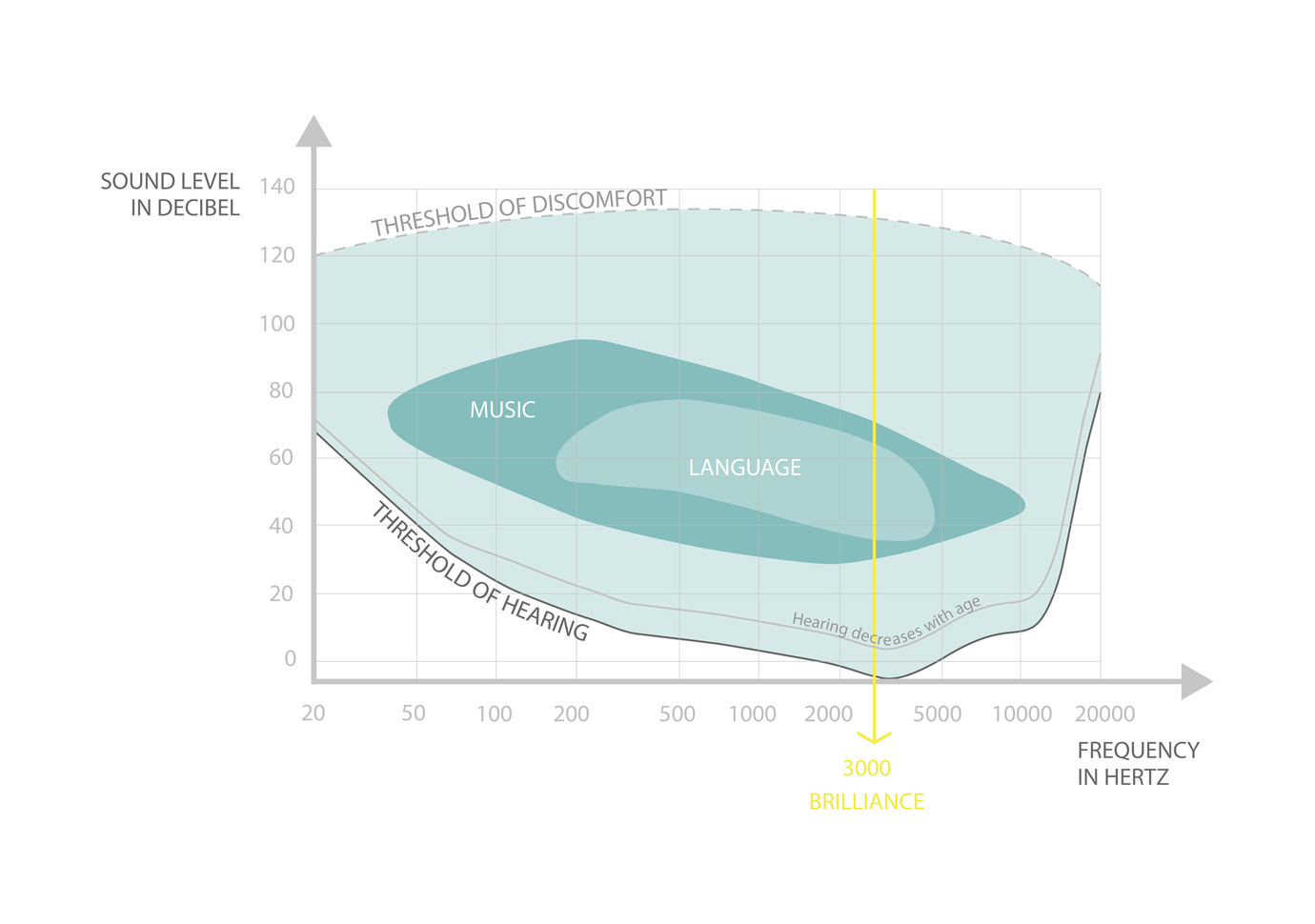Have you spent years mastering the art of string playing but still know little about the ideal way to handle your tools? Are you curious to learn more about the possibilities a high-performance string offers and do you want to optimize your performance in a few simple steps? Stringtelligence offers you an exclusive insight into the science of strings. Find widely unknown tips and tricks of the trade to perfect your sound and elevate your playing to an unexpected level! More than 20,000 words and 19 video tutorials in over 90 chapters: This is string know-how at its best!
What do I need to look out for to avoid hearing damage?
In principle, the human ear is most sensitive in the range of 4000 hertz. This is also where the brilliance zone is. However, everyone is more or less sensitive to various frequencies. This is also related to age. Young musicians are more sensitive to volume, meaning they are also significantly more sensitive in the brilliance zone than adults. They normally prefer strings with less brilliance. As you get older, your hearing for higher frequencies progressively becomes weaker at the same intensity (volume), so older musicians increasingly look for strings with more brilliance.

The subject of frequency is also a challenge, especially for violinists and viola players. The violin produces a noise level of up to 120 decibels right by the musician’s ear. However, 85 decibels is the official benchmark, from where hearing can be damaged in the event of persistent noise. About 25,000 tiny hairs in the inner ear are constantly working to emit sound information to the auditory nerve. They suffer particularly from persistent noise and can also be damaged. With long enough periods of quiet, the sensory cells straighten up again, but not permanently. As you age, you also don’t hear overtones as well. This applies for all string players. However, for bassist or cello players, the pain threshold is not as quickly achieved because the instrument is not directly next to the ear. We recommend selective hearing protection to counteract this problem in good time.
BACK

 ESPAÑOL
ESPAÑOL